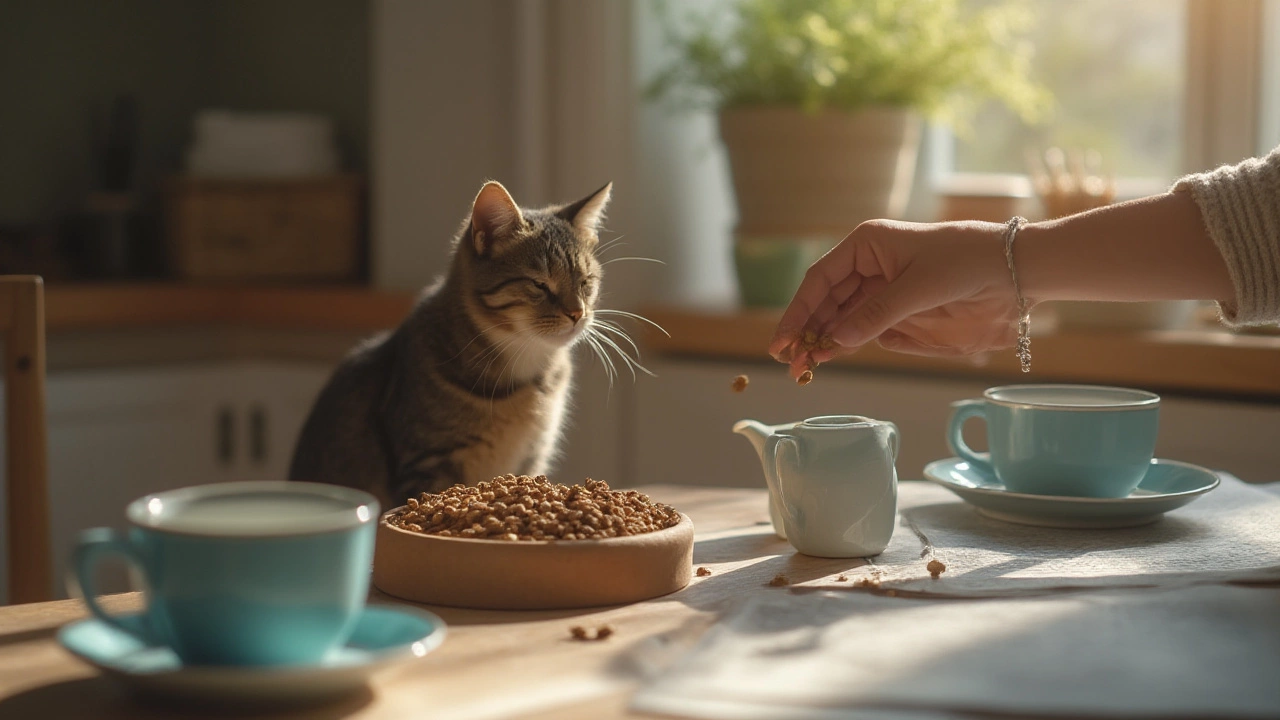Cat Overfeeding: Spotting the Problem and Fixing It
Ever watched your cat stare at your plate and think, “I deserve a bite?” That urge can turn into real weight gain if you’re not careful. Overfeeding looks harmless, but it’s a fast track to obesity, joint pain, and a shorter life. Let’s break down the signs, why it happens, and what you can do right now to get the diet back on track.
Why Overfeeding Hurts Your Cat
Cats are natural hunters. In the wild they eat small meals throughout the day, not a bowl full of kibble that never runs out. When you leave food out all the time, they eat whenever they feel like it, not when they’re actually hungry. The extra calories pile up, leading to a round belly, lazy behavior, and health issues like diabetes and arthritis.
Even if you’re feeding premium food, too many calories equal weight gain. It’s easy to think a handful of treats won’t hurt, but those little bites add up quickly. Remember, a cat’s metabolism is different from a dog’s – they don’t burn off excess food as fast.
How to Stop Overfeeding in Simple Steps
First, measure every meal. Use the scoop that comes with the food and stick to the recommended amount based on your cat’s weight and activity level. If the package suggests “½ cup per day,” split that into two or three meals instead of leaving a bowl out all day.
Next, set a feeding schedule. Cats thrive on routine, so feed at the same times each day. When it’s time, put the food down, let them eat for 15‑20 minutes, then remove the bowl. This mimics natural hunting patterns and helps them learn when they’re truly full.
Watch the treats. Limit extras to no more than 10 % of daily calories. Choose low‑calorie options like a small piece of cooked chicken or a commercial treat labeled “light.” Keep a tally so you don’t lose track.
Finally, keep the cat active. A few short play sessions with feather wands or laser pointers burn calories and keep the mind sharp. Even a simple cardboard box can become a fun hunting ground.
If you notice your cat’s waist getting wider, you’re losing the ability to feel the ribs easily, or they’re becoming less active, it’s time to adjust the food portion right away. A quick weigh‑in at the vet can give you a baseline and a target weight.By measuring food, sticking to a schedule, controlling treats, and encouraging play, you’ll stop the silent creep of overfeeding. Your cat will stay lean, energetic, and ready for many more purr‑filled years.
- Morgan Ainsworth
- 0 Comments
Do Cats Stop Eating When Full? Understanding Cat Feeding Behavior
Get the facts on cat eating habits. Learn if your cat will stop eating when full, the risks of overfeeding, and how to feed your feline for best health.
View More
